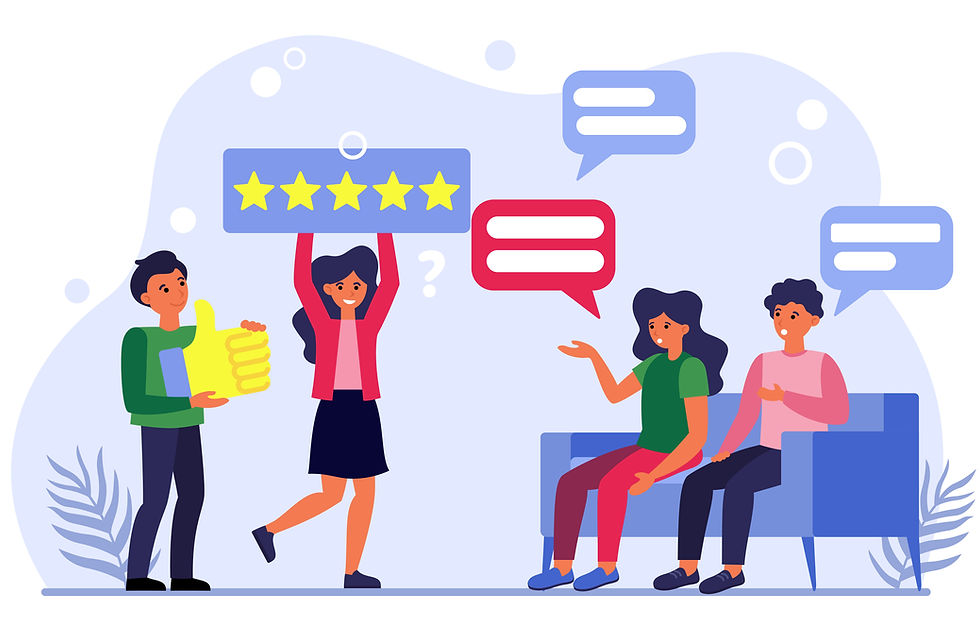Fast Company Innovation Festival: Trends in tech, business and innovation
- Dhairya Sathvara
- Nov 1, 2023
- 4 min read
In September, I had the opportunity to attend the Fast Company Innovation Festival hosted by Fast Company, a business magazine with a focus on tech, business, and design. Spanning over four days this flagship conference is the confluence of innovation, design, tech, entrepreneurship, leadership, sustainability, and creativity.
Notable speakers at the conference included Bela Bajaria, Chief Content Officer at Netflix, Stephanie Bancel, CEO of Moderna, Brian Chesky, Cofounder and CEO of Airbnb, Chris Nasseta, President & CEO, Hilton and Elizabeth Nieto, Global head of equity and Impact, Spotify among others. From NYU SPS, Center for Global Affairs Associate Dean Carolyn Kissane was part of a panel titled “Dollars Doing Better: How Responsible Investment Can Drive Change and Returns.” Panelists discussed the importance of companies aligning their vision and strategy to the future to create meaningful change.

A lot happened over four days, panels and workshops that discussed mission-driven leadership, and immersive fast tracks giving insider access to some of the most dynamic companies, studios, and startups in the city. Within all of this intellectual chaos I did have a few key takeaways from the conference:
Innovation within existing products: Every product or service is an opportunity for great innovation. With changing times and changing systems it is important to address what users need at the moment and pivot accordingly. Ikea’s in-store meatballs after its massive popularity have now moved to create plant-based meat balls or plant balls which are key to reducing IKEA’s massive CO2 footprint by at least 50% by 2030 and 90% by 2050 as shared by Jesper Brodin, CEO of Ingka Group, the parent organization of IKEA. “If you want to be at the forefront of business, you need to be in the forefront of problems, even if you don’t have all the answers.” - Jesper Brodin, CEO of Ingka Holdings. A panel titled “Empathy and Innovation: Keeping the Customer at the Center” discussed how consumer products especially in banking need to be redesigned, and changing legacy business models to make them more customer-centric.
Data sharing across industries is key: An important theme across the conference was scalability, and scaling at a faster pace. One can achieve this by harnessing “data” the right way. Massive data can be used to generate insights but the key here is not only having access to data but having strategic partnerships and easy data-sharing policies with these partners for improved experiences. For example, imagine a user traveling for a vacation who has had a delayed flight. The end-user experience could be far better if the airline could share this data timely with the hotel and also with the travel insurance company for an overall positive experience for the user - even if one segment of the journey has had a negative experience on the traveler. While today the data-sharing space is heavily regulated with a lot of data-sharing policies in place - strategic data sharing is key to designing innovative solutions. This was shared in a panel titled “The New Premium Frontier: How Elevated Experiences Create Forever Customers” which featured Daniela Jorge, Chief Design Officer, Capital One; Shannon Knapp, President and CEO, The Leading Hotels of the World; and Lauren Liss, SVP, Premium Products and Experiences, Capital One. Similarly, data sharing across all different healthcare products like hospitals, health apps, and wearable devices can provide insights that can help a user stay active and also get access to the right kind of preventative care as shared by Tracey D. Brown, EVP, President of Retail, and Chief Customer Officer, Walgreens; Ricky Choi, Head of Digital Health, Samsung Electronics America; and Drew Panayiotou, Global CMO, Pfizer in the session, “Future of Health: Enhancing Wellness Through Creativity.” I myself geek out on all my health data being shared with Apple Health and it syncing perfectly with all my other apps for nutrition, sleep, and workouts for a deeper insight into my overall well-being.
AI in the new era: Slack CEO, Lidiane Jones mentioned that leaders today need to embrace AI and expand the access of all of these tools to their teams, which eventually will also unlock some time for individuals to deepen their relationships with each other. We know that a lot of jobs are in fact in danger because of the AI boom and one thing probably we know for sure is that AI or technology in general is an aid in any creative business and not a driver. According to Catherine Courage (VP of Knowledge at UX, Google), AI will democratize access to information even more than search. With new apps integrating Chatbots will see a rise in AI like having a more human-like conversation - which we already see in apps like Snapchat. The bottom line is that the AI era is still very much in the design phase and it will take a lot of time, iteration, and perfection before we get to a point where they will take our jobs.
There was a lot of focus on innovation, AI, tech, and building the right set of future leaders. However, an aspect not touched upon was education. An impact of all of the above on education could have helped get a deeper understanding of the future trends as well as best practices to build an education ecosystem keeping the next 30-50 years in mind. With rapid changes like AI disrupting the landscape any system, especially an educational institution should be equipped to pivot - to be a true innovator.



Comments